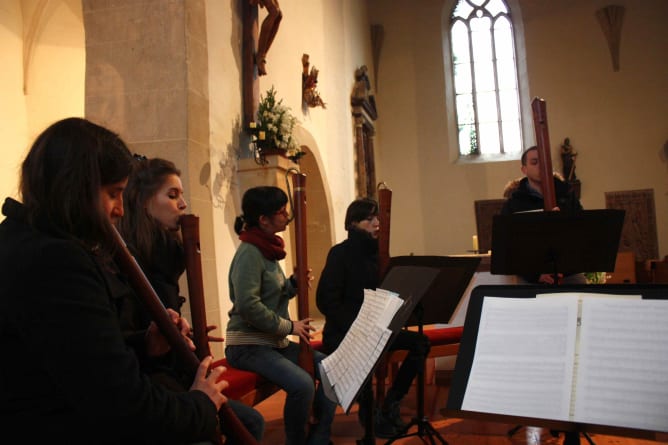What our project is about:
We are an Austrian-based recorder consort, Ensemble Ancor, and have until now focused on the interpretation of Renaissance music.
Now we would like to start a concert project in which the music of the Renaissance is linked to the music of the Middle Ages in order to reveal the uniqueness as well as similarity of both styles and to show the continuity between them.
The homogenous sound of a recorder consort was very much appreciated in the Renaissance. Not so much in the Middle Ages – back then a combination of instruments which all sound very different from each other was sought after. The performance of medieval music would therefore require wind instruments, keyboard instruments as well bowed and plucked string instruments all being played at the same time. Those are for example the clavicymbalum (an early model of the harpsichord), the organetto (a very small organ), the vielle (a fiddle), and the medieval harp.
The instruments listed above could all be played by members of Ensemble Ancor as some of us have also studied or are still studying instruments which are similar to those just mentioned. These are the harpsichord, the viol and the harp. Furthermore we have taken part in university courses and masterclasses, where we could gain significant insights into medieval performance practise.
Why we need your support:
The reconstruction of medieval instruments by specialised instrument makers and the research on historical instrument types and performance practise still has to be funded.
We are already travelling through France, Spain, Austria and England in order to discuss the various possibilities of reconstructing medieval instruments with different instrument makers. As there are no extant instruments of the instrument types we would like to play on, we are completely dependent on studying paintings and manuscripts.
The instruments which we would like to have built on the basis of our research will constitute unique items, whose construction and sound quality may enrich and enlighten the current research on medieval performance practise.
However, the research on the reconstruction of medieval instruments and the commissioning of new instruments from specialized instrument makers is very expensive and has to be funded. We would like to sincerely thank you for your support!










